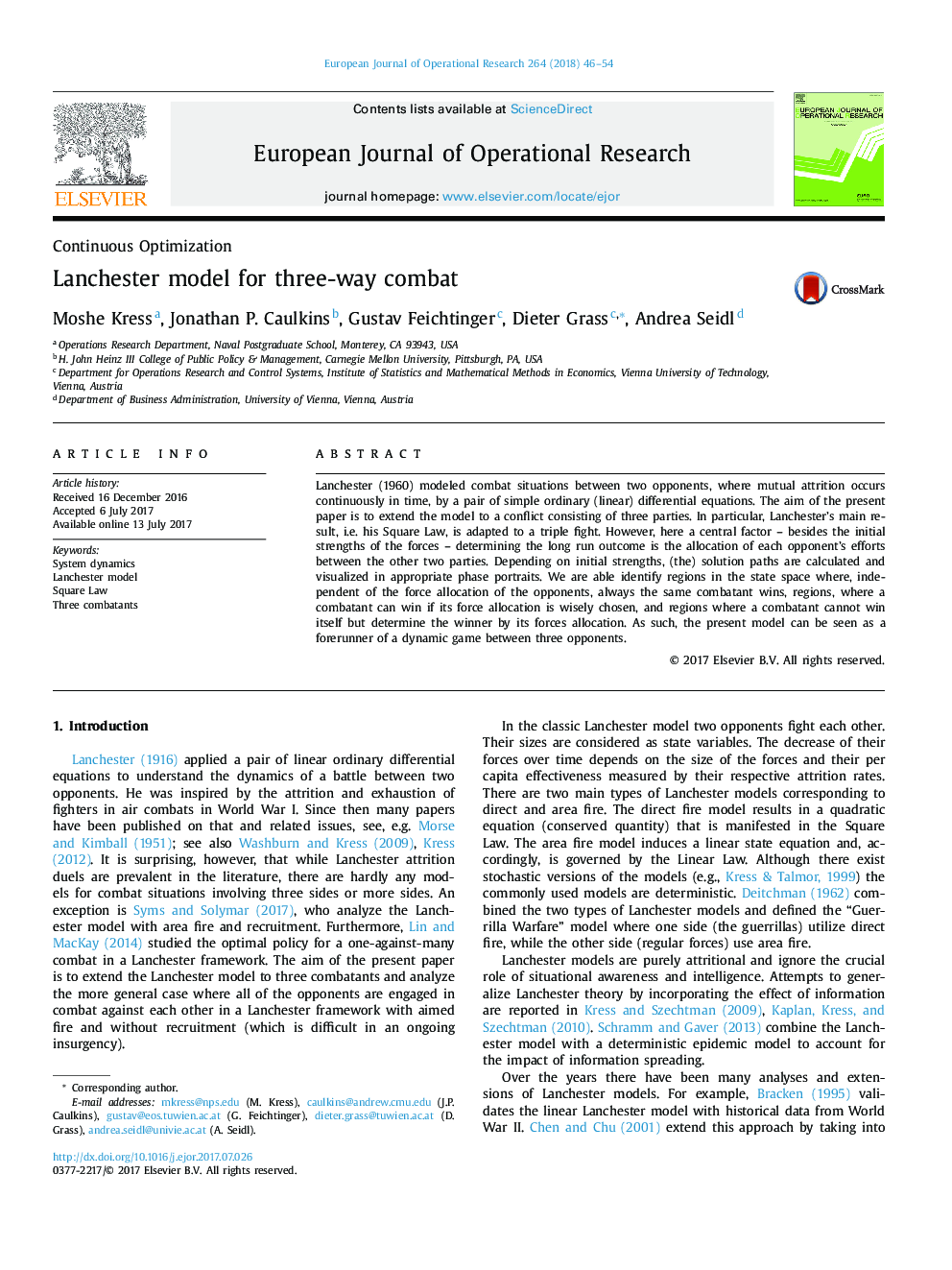| Article ID | Journal | Published Year | Pages | File Type |
|---|---|---|---|---|
| 4959439 | European Journal of Operational Research | 2018 | 9 Pages |
â¢We extend the classic Lanchester model to a three-sided conflict.â¢The force-allocation between opponents can determine the winner of the battle.â¢The initial force sizes and attrition rates are crucial for the outcome.â¢By eigenvalue analysis we identify regions in the state space with differing winners.â¢In some cases an opponent cannot win, but determine the winner by its force allocation.
Lanchester (1960) modeled combat situations between two opponents, where mutual attrition occurs continuously in time, by a pair of simple ordinary (linear) differential equations. The aim of the present paper is to extend the model to a conflict consisting of three parties. In particular, Lanchester's main result, i.e. his Square Law, is adapted to a triple fight. However, here a central factor - besides the initial strengths of the forces - determining the long run outcome is the allocation of each opponent's efforts between the other two parties. Depending on initial strengths, (the) solution paths are calculated and visualized in appropriate phase portraits. We are able identify regions in the state space where, independent of the force allocation of the opponents, always the same combatant wins, regions, where a combatant can win if its force allocation is wisely chosen, and regions where a combatant cannot win itself but determine the winner by its forces allocation. As such, the present model can be seen as a forerunner of a dynamic game between three opponents.
